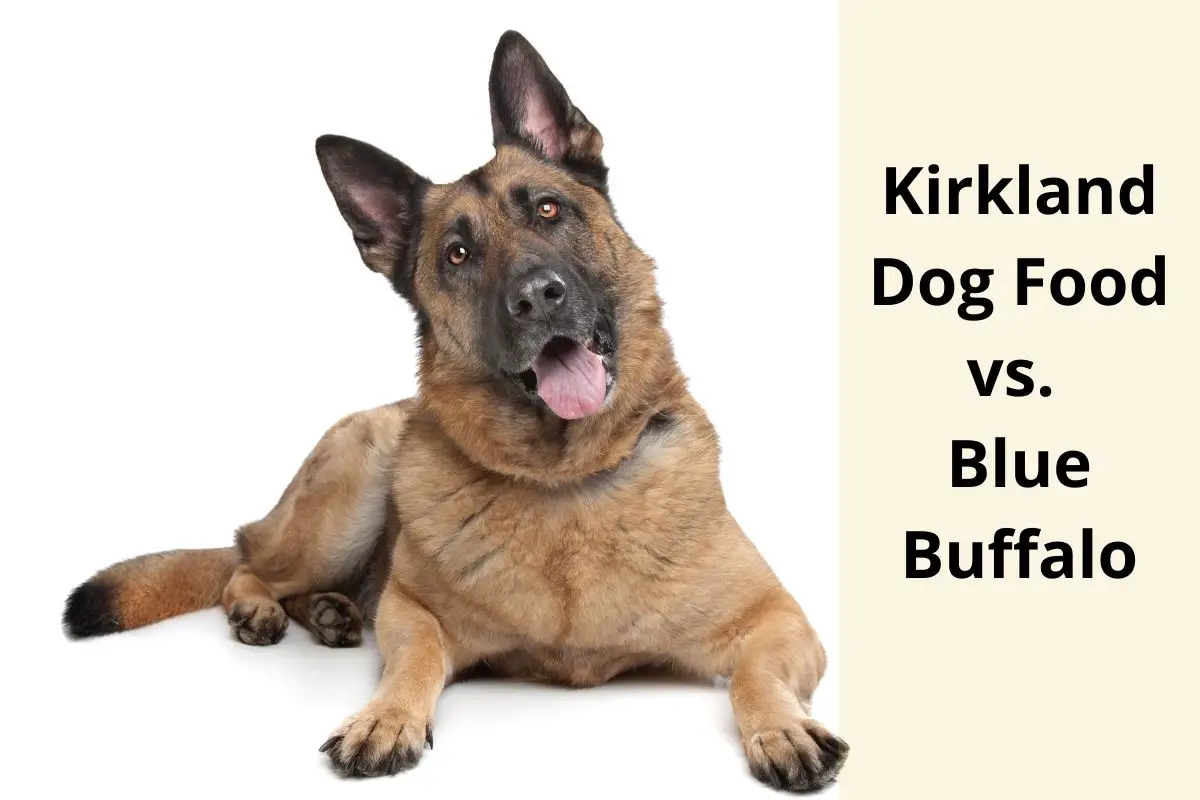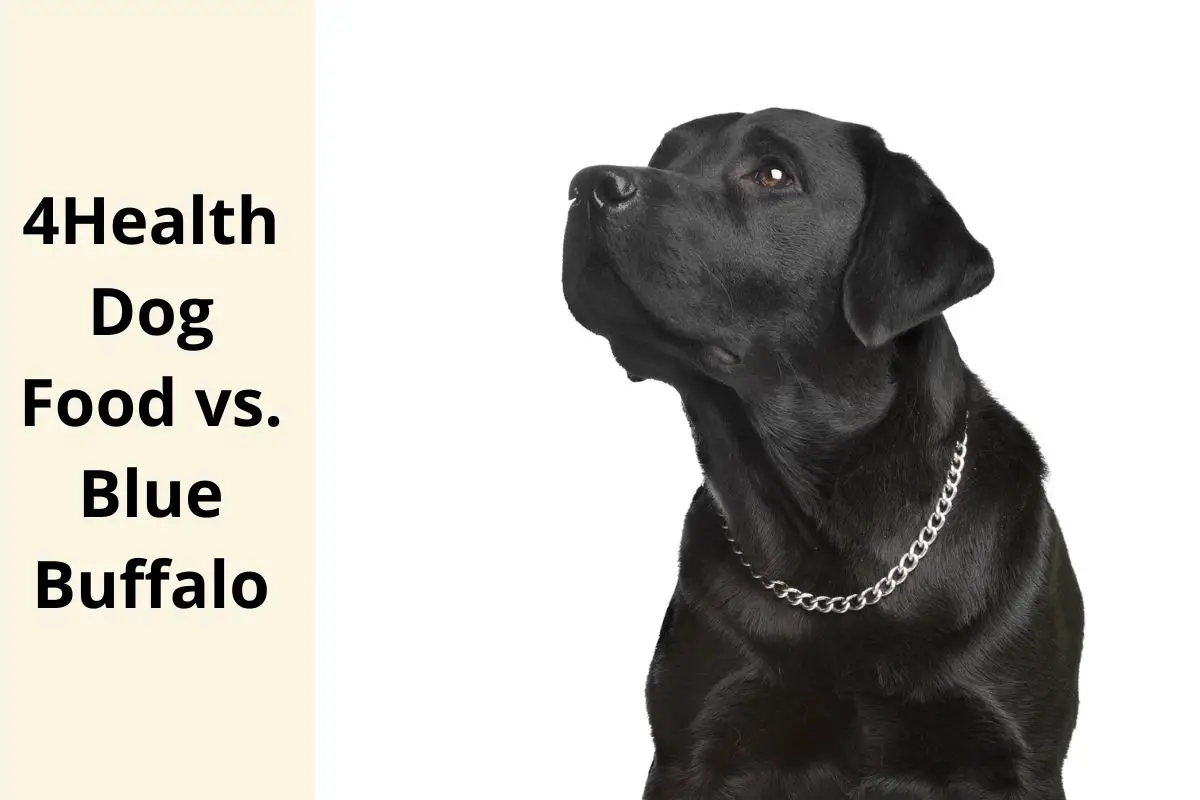This post contains affiliate links.
Some dogs don’t do well with constant changes to their diet, so when you pick a brand, you want one that you can stick with. But with so many choices available, it’s challenging to know which to choose. Two brands that have similar price points are Fromm and Taste of the Wild.
When deciding between Fromm and Taste of the Wild, choice, quality of ingredients and price need to be considered. Both Fromm and Taste of the Wild have high-quality ingredients. Fromm provides more options, but Taste of the Wild is slightly less expensive.
Our review will provide a detailed look at both product lines, show how they stack up against each other, and why both are much better choices than less expensive but better-known brands.
Here’s an overview of how the two brands stack up against each other to get you started.
|
Fromm |
Taste of the Wild | |
|
Products |
3 product lines: Four-Star, Gold, and Classic Dry foods |
7 different formulas, both dry and wet foods |
|
Dry |
Four-Star, Gold, and Classic lines, with a total of 32 products |
3 Lines: Taste of the Wild, Taste of the Wild Ancient Grains, and PREY Limited Ingredient, with a total of 16 flavors |
|
Wet |
34 different flavors, including pates |
5 flavors |
|
Treats and Other |
5 treats |
none |
|
Key Ingredients |
Weight Control, grain-free, and grain-inclusive |
Grain-free and Grain-inclusive |
|
Protein sources |
14—including lamb, quail, rabbit, and duck |
7—including bison, wild boar, and venison |
|
Prices |
Pricier. Basic bag is around 13 cents an ounce |
Less expensive—about 11 cents per ounce for a Taste of the Wild |
|
Ratings |
4.5-4.8 range |
In the 4.2-4.7 range |
|
Website |
Easy to navigate and find ingredients and their purpose |
Inferior navigation. Products listings are complete, but explanations of the ingredients’ purpose are lacking. |
Key Takeaway: Fromm has more products, provides better information, but it is more expensive. However, just because a company has more products doesn’t mean they are superior. And your dog probably doesn’t care about a flashy webpage. Let’s dig a little deeper into our comparison to get an in-depth analysis of both companies, their offerings, and positives and negatives of each.
Table of Contents
The Fromm Family Foods Story
Fromm Dog Food is manufactured by Fromm Family Foods, a company that has been in Wisconsin since the 1920s. Their early success as fox farmers (to sell fur) led them to develop the first vaccines for fox, canine, and feline distemper in 1939. This was followed by creating the first dry dog food (kibbles), which they tested on 50,000 foxes and dogs to ensure it was nutritionally sound.
Fromm pioneered another innovation using natural preservatives are mixed tocopherols to preserve pet food to prevent oxidation. Mixed tocopherols can now be found in many pet foods as a natural preservative.
What exactly are mixed tocopherols? The simplest explanation is they are Vitamin E that has been extracted from numerous sources.
Fromm Dog Food is still based in Wisconsin and has strong roots in their community. All their pet foods are processed in one of three factories, and all are located in Wisconsin.
The Taste of the Wild Story
The Taste of the Wild is part of Diamond Pet Foods, a much younger company than Fromm. Diamond was launched in 1970 in Meta, Missouri. Both companies are still family-run, but Fromm has kept its plants in Wisconsin. Meanwhile, Diamond Pet Foods now has plants in three other states: Arkansas, South Carolina, and California.
While neither company is in the Top 10 in terms of pet food sales, Taste of Wild parent company far outsells Fromm. Fromm has an annual revenue of $7.36 million, while Diamond Pet Foods boasts $1.5 billion in annual revenue. From a yearly revenue perspective, Diamond has Fromm beat.
This disparity is because Diamond also manufactures NutraGold, Nutra-Nuggets, four Diamond labels, Solid Gold, and even Chicken Soup for the Soul Pet Food. However, if you have bought the Kirkland Signature brand, your dog has eaten a Diamond product, though not necessarily Taste of the Wild.
The growth of Diamond Pet Foods and the sale of private-label foods made it necessary for them to build factories on both the east and west coasts.
Overall Product Line Comparisons
Fromm
Fromm has three primary product lines, and each line has several options.
- Fromm Classic – The original Fromm goes back to 1949 when they first sold kibble food. The primary protein is chicken, with rice, barley, and oat as other ingredients.
- There are slightly different formulations for the three versions: puppy, adult, and mature adult.
- Fromm Gold – This line seems like an updated version of the classic brand. It contains specific formulations for puppies, large breed puppies, adult, and large breed adults, three weight management formulas, and a reduced activity and senior dogs formulation.
- Fromm Four-Star – This line has the broadest range of flavors, in both dry, wet, and treats. These are made in smaller batches. Fromm has designed this line so that you can offer your dog a variety of each meal. All recipes are grain-free. The flavors and main ingredients are:
- Beef Frittata – beef, pork, liver
- Chicken A La Veg – chicken, cheese, and egg
- Chicken au Frommage – Chicken, chickpeas, and lentils, and cheese
- Duck A La Veg – Duck, Chicken, with oat groats, brown rice, and pearled barley
- Game Bird – Turkey, duck, goose, lentils, and chickpeas
- Hasen Duckenpfeffer – Rabbit, duck, pork, chickpeas and lentils
- Highlander Beef – Beef, lamb, haddock, oats, eggs, and barley
- Lamb and Lentil – Lamb, lentils, chickpeas, and cheese
- Pork and Applesauce – Pork, oat, barley, rice, and apples
- Pork and Peas – Pork, chickpeas, pea flour, and cheese
- Rancherosa – Beef, lamb, pork, and pinto beans
- Salmon A La Veg – Salmon, salmon meal, oat, brown rice, and barley
- Salmon Tunalini – Salmon, tuna, peas, lentils, and pinto beans
- Surf and Turf – Salmon, chicken, duck, lentils, and chickpeas
- Whitefish and Potato – whitefish, menhaden fish meal, sweet and regular potatoes, rice, and barley
- Zealambder – lamb, oats, barley, eggs, and salmon meal
If you want variety, this line has it. Some ingredients on the list look so tasty that you might want to try a kibble.
Taste of the Wild
The name Taste of the Wild comes from their claim that the formulations are closely related to the diets that dogs would naturally eat. This means high protein and low carb dog and cat foods.
The company offers seven different formulas in both dry and wet varieties.
- Appalachian Mountain – A formula designed for small breeds, Appalachian Mountain, features a smaller kibble. The two primary ingredients are venison and garbanzo beans. Lamb, duck, egg, and fish are other meat sources in this blend, and additional ingredients are geared for the high energy needs of small breeds.
- High Prairie – The High Prairie formula is meant for active dogs. The primary meat source is a bison and venison mix, and non-grain ingredients include sweet potatoes and peas. A version for the nutritional needs of puppies is available.
- Pacific Stream – Like its namesake, Pacific Stream features salmon as the primary protein source. Like the High Prairie line, you can buy a puppy blend.
- Pine Forest -Maybe because hunters often bag deer in pine forests, this blend is called Pine Forest. The primary protein is venison. This version is similar to Appalachian Mountain, except designed for large dogs. The fat content is reduced, perfect for those people who are concerned about their pet’s weight.
- Sierra Mountain – For dogs who don’t respond well to beef protein, Sierra Mountain has roasted lamb as its primary meat source. Sweet potato, peas, and tomato are other main ingredients.
- Southwest Canyon – Wild boar seems like a meat source that was part of many dogs’ evolutionary diet. Southwest Canyon’s primary meat source is beef, with lamb meal and wild boar. Garbanzo beans and pea flour are filler ingredients. Perhaps the name inspired the addition of yucca schidigera extract.
- Wetlands – Duck and chicken are the primary protein sources, although it contains some quail, duck, and turkey. This blend includes both sweet and regular potatoes.
Key Takeaway
Both brands focus on having meat be their primary protein sources and using various vegetables and legumes for extra protein and digestion. Fromm has far more variety, but that can be overwhelming. Plus, not all dogs do well with constant variety.
Marketing names aside, Fromm has an edge because of their other product lines. Along with wet and dry foods, Fromm has two lines, Pate and Frommbalaya, that are wet products that can be eaten alone or mixed in with dry food for additional moisture.
A second line, Crunchy Os, consists of healthy treats. And two additional products, Family Remedies, are supplements that provide digestive support.
Nutritional Analysis
Good sounding products and interesting histories are okay, but pet food is ultimately about the nutrients. Let’s compare the two labels on three critical nutrients: protein, fat, and fiber. To make this manageable, we will use overall averages. If you are interested in the numbers for a specific product, you can find them on their websites.
Crude Protein
The average crude protein found in dry Taste of the Wild (32%) is slightly higher than Fromm (28.7%). Wet crude protein percentages also show Taste of the Wild beats Fromm (45% to 40.7%). At first glance, it looks like Taste of the Wild wins the protein wars. A quick discussion of crude protein is needed.
Crude protein might sound the amount of protein found in uncooked food, but it refers to how it is measured. To determine how much protein is in a food, manufacturers measure the amount of hydrogen present. Although meat protein releases hydrogen, so do non-animal proteins and other ingredients.
Some manufacturers added melamine to their food to boost the amount of nitrogen and arrive at a higher crude protein percentage. This practice was ended after a nationwide recall in 2007. Neither company was involved in the recall.
As long as the manufacturer follows the guidelines of AAFCO, any animal by-products, like animal meal, can be included to up the protein percentages.
The best way to find out if the sources are high quality is to check the ingredient lists. If the first food listed is whole meat, like chicken, salmon, beef, etc., your dog is getting superior protein. The more you see meal and rendered meat, the more inferior the protein quality.
A comparison of Taste of the Wild’s Ancient Grains Prairie versus Fromm’s Four-Star Rancherosa, here are the first three ingredients:
- Fromm Rancherosa – Beef, lamb meal, and pork — 28% crude protein
- Taste of the Grain Ancient Prairie– Buffalo, pork, and chicken meal — 32% crude protein
Both products get most of their protein from meat, and Taste of the Grain has a slightly higher protein count.
Compare that to Purina Bella Natural Turkey and Chicken Dry Dog Food. The first three ingredients are turkey, whole grain corn, and whole-grain wheat. The crude protein is 26%, but it’s an inferior protein. Chicken, by the way, is the 6th ingredient.
Fat
With fat, the two are very close, with both wet and dry food. Taste of the Wild beats out Fromm by a percentage point in dry, but Fromm has nearly a percentage point more in their wet foods.
Fat serves an essential role in a dog’s nutrition, providing these benefits, and more:
- Help dogs absorb vitamins
- Improve the health of your pet’s skin and coat
- Make the food more palatable
Both Fromm and Taste of the Wild beat out Bella Natural 15.5%
Fiber
Dogs need fiber to fight constipation, reduce colon cancer risk, and regulate the digestive system. Again, fiber results are very similar for Fromm and Taste of the Wild, and both beat Bella Natural Turkey and Chicken.
Key Takeaway
Taste of the Wild has a little additional protein, Fromm has a tad bit more fat, and they both have the same amount of fiber. Taste of the Wild comes out ahead, but both beat Purina’s Bella Natural.
However, if you want to know what’s in the food and why Fromm’s website is much easier to navigate, for example, the Reduced Activity Senior Gold contains celery. Click on the word celery, and an explanation pops up. According to the website, celery is added because it is high in fiber, helping with digestion and regularity.
Understanding Pet Food Ingredient Lists
Some ingredients listed on a label are straightforward. Fromm’s Adult Classic Dry Dog Food lists chicken as its first ingredient. But if a food has chicken, then why does it also need chicken meal? Other ingredients at least tell you what they are for. Sorbic acid, for example, is used as a preservative. But what purpose does chicory root extract serve?
Before we answer that question, let’s explore who decides what should be listed on pet food labels.
Who Decides What Goes on a Food Label?
Who is responsible for labeling and regulating pet food, anyway? Ultimately, the U.S. Food and Drug has responsibility for pet food regulations. However, agricultural departments of individual states regulate food in their states. How do 50 states agree on ingredients so Fromm, Taste of the Wild, or any other food can be sold anywhere in the United States?
The answer is the Association of American Feed Control Officials or AAFCO. State regulators, FDA staff, and other stakeholders work together to develop animal feed regulations. These regulations serve as guidelines or suggestions. Ultimately, the individual states have to adopt the regulations.
States typically adopt the guidelines. Doing so allows them to keep their regulations in sync with other states. Otherwise, pet food would have to be manufactured and marketed differently across the United States. Imagine the nightmare of having to create multiple recipes of the same food for different states.
AAFCO regulations deal with three broad areas of pet food:
- Label requirements – So that consumers can compare products, there has to be agreement on what terms like natural or human-grade mean.
- Ingredient Definitions – These include whether an ingredient is safe, and what different terms, like meat by-products mean.
- Nutritional Profiles – Requirements for nutritional requirements for dogs and cats at different life stages need to be included in their food.
If you ever see something on a dog food label and wonder what it is, the AAFCO Ingredient List page is an excellent reference to check out.
Recall History of Both Companies
Each company has had its products recalled. In 2016, Fromm had to recall products because some vitamins and minerals were incorrectly listed. A 2012 recall for Taste of the Wild was due to Salmonella.
- Neither company has the kind of grain products. Corn and wheat, in particular, have been linked to health problems in dogs. Some products, such as beet pulp and tomato pomace, are considered cheap fillers.
- Both companies use pea protein in numerous products. Plant proteins are considered inferior to animal protein; however, it is not a primary protein source in any recipe.
- White rice, which is in some Fromm products, lacks the nutrition of brown rice.
- Canola oil is sometimes produced with genetically modified rapeseed oil, and a few of Taste of the Wild products contain Canola Oil.
- Garlic powder is contained in a few Fromm products. However, minute amounts of garlic will probably not harm your pet. There are plenty of other Fromm recipes that don’t use it.
Overall, both companies have had few recalls, avoid most unhealthy or controversial ingredients, and sell nutritionally sound food.
Conclusion
Deciding whether to buy Fromm or Taste of the Wild is both easy and difficult. The easy part is realizing that both are better than inferior dog foods with wheat and corn products. More difficult is choosing between the two.
Fromm gets a small nod for having more variety and a long tradition of providing healthy foods. Taste of the Wild is somewhat less expensive and easier to find. Unfortunately, you can’t ask your dog, so you’ll have to make that decision yourself.
Related Articles
- Fromm vs. Merrick: Which Dog Food Is Better?
- Fromm Dog Food vs. Blue Buffalo: Pros and Cons of Each Brand
- Fromm vs. Acana: Pros & Cons of Each Brand
- Kirkland Dog Food vs. Purina Pro Plan: Which Dog Food Is Better?
- Kirkland Dog Food vs. Diamond Naturals: Pros & Cons of Both
- Nature’s Domain vs. Taste of the Wild: Pros and Cons of Each Brand
- Purina Pro Plan vs. Taste of the Wild: Pros & Cons of Each Brand
- Taste of The Wild vs. Orijen: Pros & Cons of Each Brand
Sources
- Taste of the Wild Pet Food: Our Company
- Truth About Pet Food: New Lawsuit Against Taste of the Wild
- Dog Food Insider: Taste of the Wild Dog Food Review
- Dog Food Guide: Fromm
- Dog Food Guide: Taste of the Wild
- Association of American Feed Control Officials
- Fromm Family: Our History
- The Meaford Independent: The Pet Expert—Understanding Mixed Tocopherols in Pet Food
- Radio Pet Lady: What Does Crude Protein Really Mean in Dog Food
Mrdogfood.com is a participant in the Amazon Services LLC Associates Program, an affiliate advertising program designed to provide a means for sites to earn advertising fees by advertising and linking to Amazon.com. We also participate in other affiliate programs which compensate us for referring traffic.




